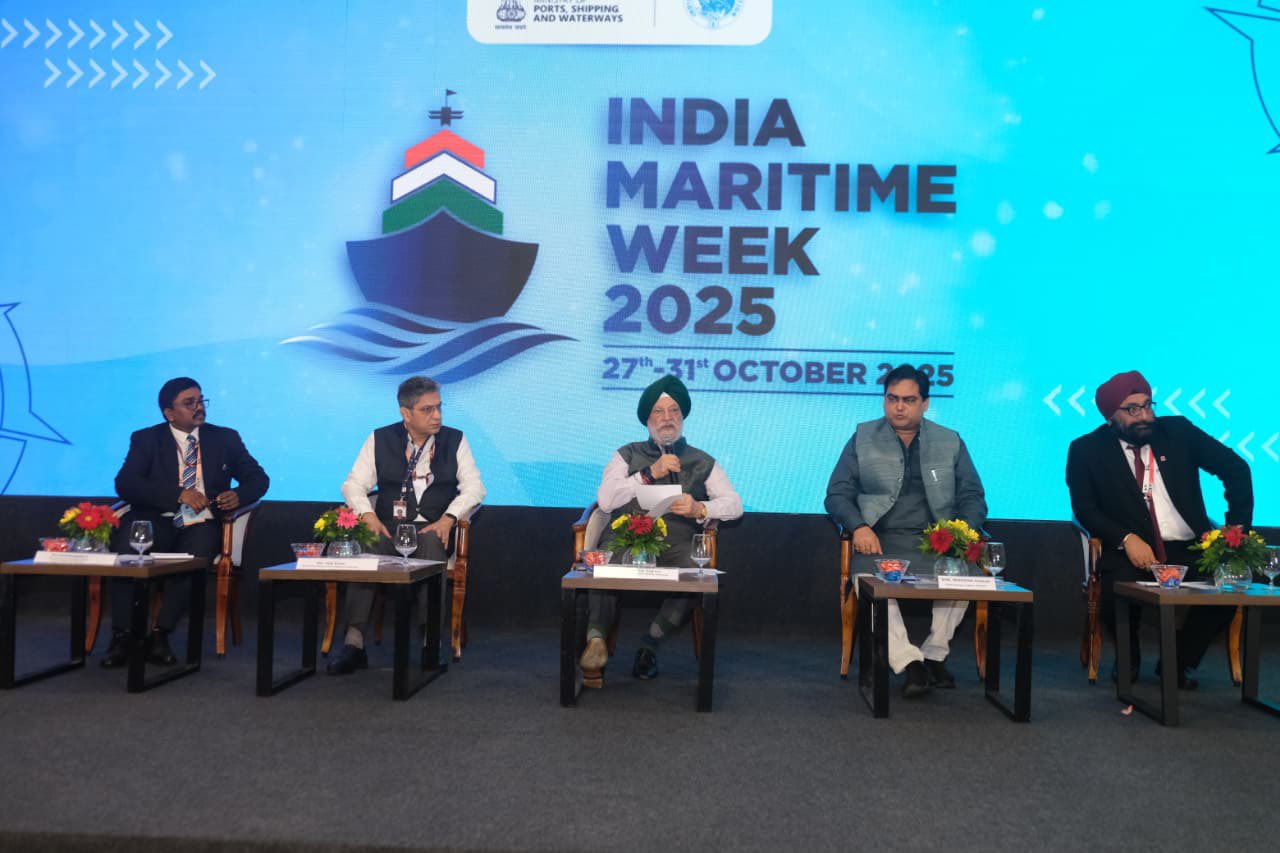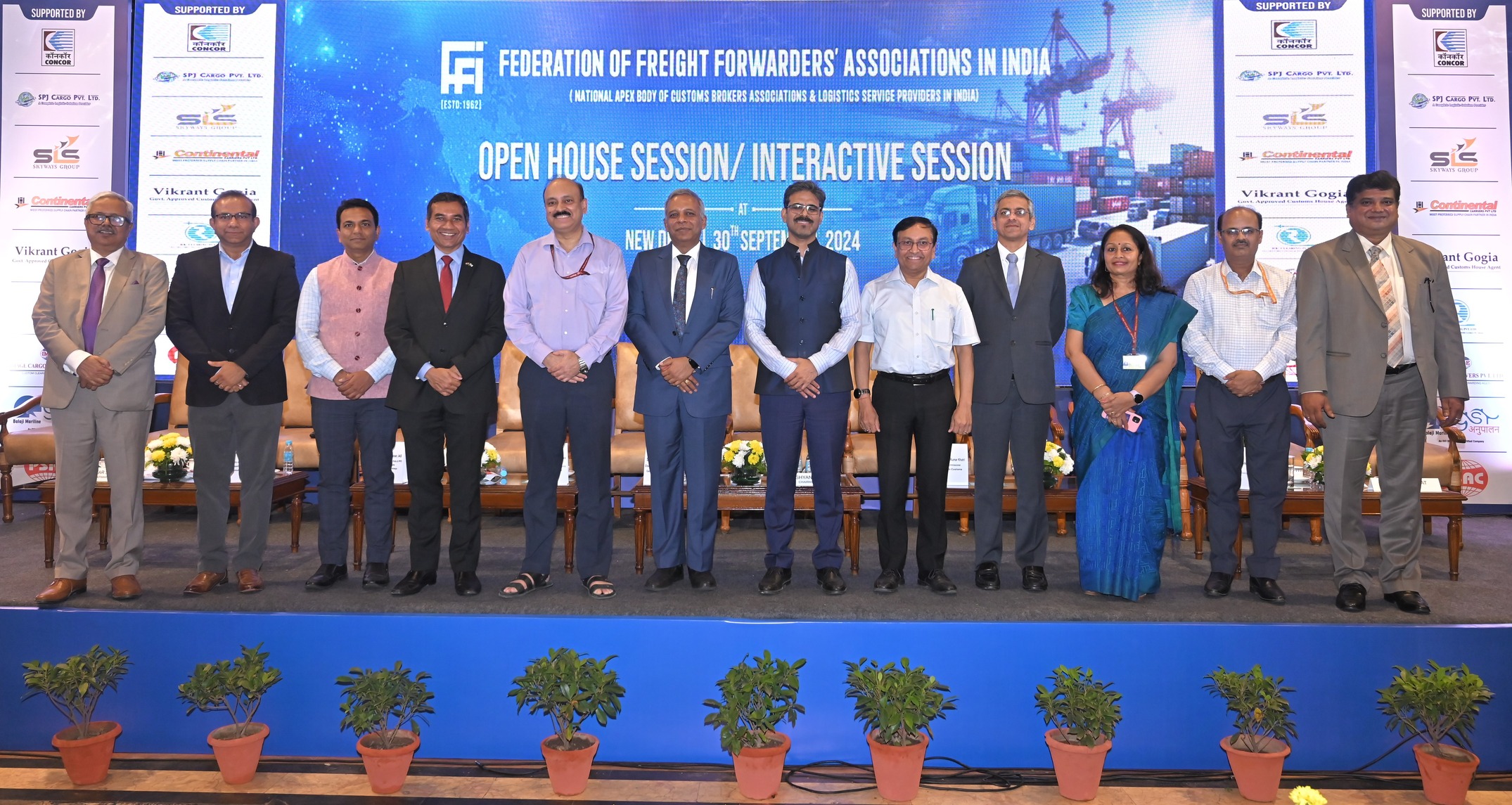Maritime News, Mumbai, India : India’s journey toward becoming a global economic powerhouse will be written at sea — in oil tankers, LNG carriers, inland barges, and future green hydrogen vessels.
This was the central message delivered by Union Minister of Petroleum & Natural Gas Hardeep Singh Puri as he addressed the Revitalizing India’s Maritime Manufacturing Conference on Day 3 of India Maritime Week 2025 in Mumbai.
“India’s increasing energy demand and the strength of our maritime sector are deeply interconnected. Our economic rise literally sails on ships,” Puri asserted.
Energy Appetite Growing Faster Than the World
India currently consumes 5.6 million barrels of crude per day, up from 5 million a few years ago. The International Energy Agency forecasts that India alone will account for ~30% of global energy demand growth over the next 20 years — higher than earlier expectations.
This means more ships. More ports. More sea routes. And critically — more self-reliance.
Oil and Gas: The Cargo That Keeps India Running
| Indicator | Current Status |
|---|---|
| Crude + petroleum imports | 300 MMT |
| Petroleum exports | 65 MMT |
| Share of oil & gas in India’s total maritime cargo | 28% — highest commodity share |
| India’s crude import dependence | 88% |
| LNG/Gas import dependence | 51% |
Yet, only 20% of India’s trade is carried by India-owned or India-flagged ships — a vulnerability the government now seeks to fix.
Billions Spent on Foreign Vessels — A Wake-Up Call
Indian PSUs spent $8 billion in 5 years chartering foreign-flagged ships.
“This expenditure could have built a strong Indian tanker fleet,”
Puri noted, calling for bold investments in domestic ship ownership.
Freight bills today:
• $5 per barrel from the US
• $1.2 per barrel from the Middle East
And that is just crude. Energy trade is expanding exponentially.
Shipbuilding Push: Policy Meets Opportunity
Puri highlighted long-term chartering plans for Indian shipowners, Maritime Development Fund support, and Shipbuilding Financial Assistance Policy 2.0 enhancements for LNG/ethane carriers.
India’s shipyards — CSL, MDL, GRSE, HSL — are now backed by private yards in Gujarat and Goa.
Global collaboration is accelerating technology transfer:
Cochin Shipyard + L&T + Daewoo → LNG/Ethane Carriers
Partnerships with Mitsui OSK → Advanced propulsion & design
Port & Shipping: Massive Jump in Efficiency Since 2014
| Parameter | 2014 | 2025 | Growth |
|---|---|---|---|
| Port Capacity | 872 MTPA | 1,681 MTPA | +93% |
| Cargo Handled | 581 MTPA | 855 MTPA | +47% |
| Turnaround Time | — | 48% faster | ✅ |
| Idle Time | — | 29% lower | ✅ |
🚀 ₹5.5 lakh crore Sagarmala projects are reshaping India’s coastal logistics and export economy.
India Rewriting Maritime Geography
India’s maritime diplomacy now anchors new trade super-corridors:
• India–Middle East–Europe Economic Corridor (IMEEC)
• International North-South Transport Corridor (INSTC)
• Expanding influence across Indo-Pacific and the Global South
Jobs, Investments & Cargo: A 2047 Vision
| Target Year | Investment | Jobs Expected |
|---|---|---|
| 2047 | ₹8 trillion | 1.5 crore jobs |
India currently handles 4.3 trillion USD GDP, with nearly half linked to global trade — a reminder that shipping isn’t optional; it is economic lifeblood.
“Oceans Are Our Opportunity, Not Obstacles”
Concluding his address, Puri said:
“India is modernising ports, building more ships, and promoting green shipping. Our oceans are pathways to prosperity. With global partnerships and a skilled maritime workforce, we will build a self-reliant and developed Bharat.”
The Bottom Line
India’s economic destiny — from energy security to exports — flows across ocean lanes.
With energy demand soaring and global shipyard slots booked for years, the window for India’s maritime resurgence is now.
India Maritime Week 2025 is where announcements are turning into action — and where India’s future fleets may have first set sail.




